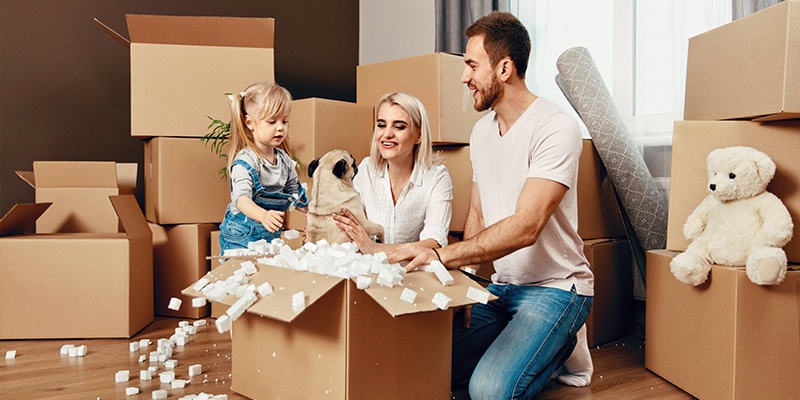Let’s get this out of the way first: moving is always complex, and there is going to be some stress. You’ve got to lift things, you’ve got to travel, there’s traffic, boxes are going to fall, possessions are going to break, temperatures will get hot; that’s just how it is. However, you can definitely manage stress, reduce it, and maybe even eliminate it for some.
Sure you, or you and your spouse, are likely going to contend with a little bit of stress here and there. There’s no way around it. Even with the right moving company, you’re doing a massive amount of work, and it will be protracted over a few days or weeks’ time—count on it.
However, your kids may have fun—and even your pets—if you’re savvy. Here we’ll explore how though several key strategies that may sound simple and straightforward but are often missed by even the most experienced individuals.
1. If You’re Not Using Movers, Take Your Time As Possible
Moving takes time anyway, why rush it? In most moving situations you’ll have a few weeks to a month to get the job done. So pack everything up, and go about your move gradually. Take a few boxes with you each day. If you take a carload daily over the course of two weeks, by the time you’re done moving, you might be done unpacking as well—stress will be eliminated.
However, this isn’t always possible—especially if you’re moving from one state to another. So the caveat here is: understand what your specific situation is and act accordingly. This will collaterally keep you from stressing over the kids.
If you’re moving one thing at a time, you’ve likely already brought your kids to the new property, or you can leave them at the old one until it’s time to leave for good. Or, you could have them with you the whole time.
2. Pack Everything Neatly And Securely
It only takes a few extra minutes to tape a box and slap a label on it. Accordingly, spend the extra time. You can prioritize which boxes need to be unpacked, separate those which are more fragile, determine which boxes to transport first, and any of a dozen other things. Also, you’re going to keep your possessions safer.
When you don’t have labels, and you don’t secure boxes, things can fall out, you can confuse which boxes are which, and you’re probably going to break something. The question isn’t “if”, the question is “when”, and “what”.
What are you going to incidentally damage, and when will that damage happen? But if everything is securely, neatly managed, these problems disappear. Also, you’re going to keep your children from incidentally damaging things as much as they likely would otherwise. You can keep delicate things away from them, or from pets.
3. Explore Professional Options
You don’t have to go it alone, and you don’t have to pay out the nose to secure the expertise of movers who help people transition between residences for a living. See what professionals from UMoveFree have to say about moving expenses—you may be surprised how much you can potentially save. Definitely, you want to save money in the move.
With a new home you’ve got earnest money, appraisal costs, repairs, down payments, taxes, and closing costs to contend with. All these things are pricey. Expect at least $3k to $5k in expanded expenses by the time you’re finished moving. Don’t add $1k+ to that figure. Work with professionals and save.
Also, if you’re working with professionals, then they can handle boxes and furniture while you keep pets, children, or both in your vehicle. The kids and pets can be separated from the moving process more “organically”, if you will, in this way.
4. Move Pets And Kids Last
You also need to be aware of low-pitched yowls or purrs, tucked-in tails, held-back ears, etc. Your cat may be experiencing cat sadness in their new home if they are displaying these behaviors. Usually, they’ll do their business outside the box and squint at you. Meanwhile, children are going to be underfoot and confused, or they’ll be scared and stressed out. However, if you bring them last, these issues disappear.

The children don’t get in the way, and they only have to make one adjustment when they’re in the new house. Meanwhile, the pets can be monitored and carefully introduced to the new premises. Little or big dogs should have less trouble than cats, but every animal is different. That said, dogs tend to prefer situations where they move, provided owners are having “fun”.
Making The Most Of The Move, And Cutting The Stress
Moving pets and children last helps eliminate a lot of stress, as does working with professional movers. Neatly packing everything helps protect materials and maintain their safety from rambunctious children or panicking pets. Lastly, moving gradually additionally helps you separate children and pets from the move, and makes things easier on you.






